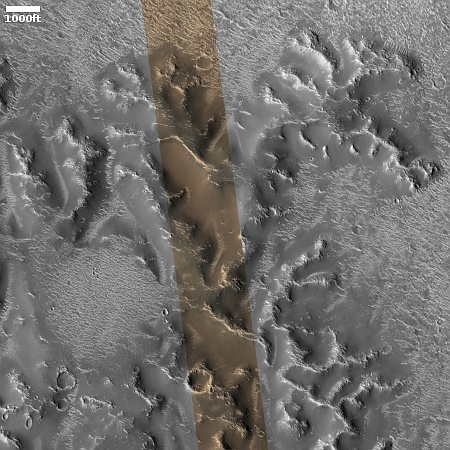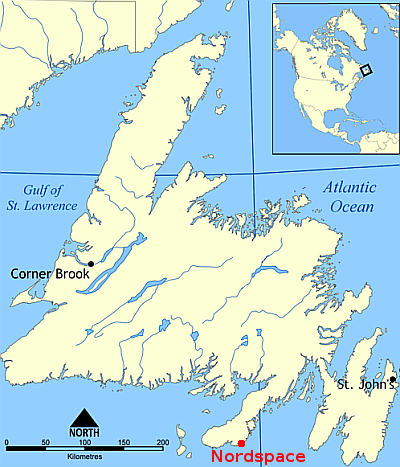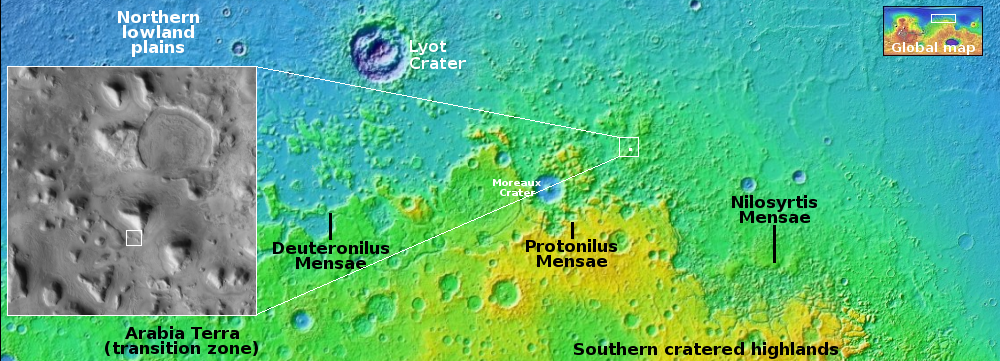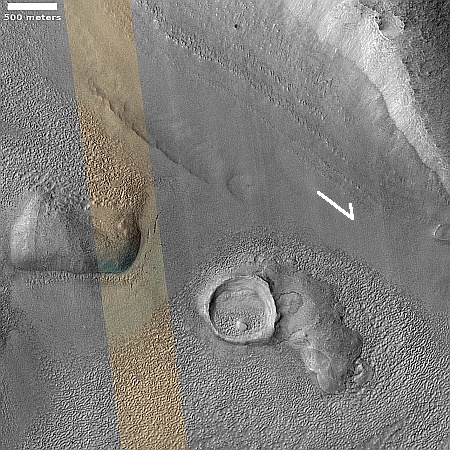New census of inverted channels on Mars strongly suggests the planet once had more water
A new review of inverted channels on Mars now strongly suggests that the red planet was once far wetter than presently seen, with the channels implying the existence of liquid rivers.
The discovery of more than 15,000 kilometres of ancient riverbeds on Mars suggests that the Red Planet may once have been much wetter than previously thought. Researchers looked at fluvial sinuous ridges, also known as inverted channels, across Noachis Terra – a region in Mars’ southern highlands. These are believed to have formed when sediment deposited by rivers hardened and was later exposed as the surrounding material eroded.
Similar ridges have been found across a range of terrains on Mars. Their presence suggests that flowing water was once widespread in this region of Mars, with precipitation being the most likely source of this water.
The image to the right is a good example of an inverted channel, a previous cool image posted in April 2025. It is located not in Noachis Terra but in the northern lowland plains.
The researchers argue that these channels suggest that about 3.7 billion years ago there were flowing liquid rivers on Mars, fed by precipitation. This conclusion however still does not explain how this could happen on a planet that is too cold with too thin an atmosphere for liquid water to exist. Every model so far proposed to make Mars warmer with a thicker atmosphere in the distant past remains questionable with many holes.
Could the inverted channels have been created by glacial activity, ice instead of liquid water? At present we don’t know enough about the Mars environment and the physics of such things in the planet’s one-third gravity to answer that question. It is however a question that scientists I think should be asking, based on the extensive evidence of glacial activity in the Martian mid-latitudes.
The big takeaway from this study however is that it adds weight to the overall trend seen in the data, that over time the total amount of water on the planet has declined. We can see this in glaciers, for example, with later glacial flows always falling short of previous flows. This research shows that even in the dry tropics there was once ample water, even if we don’t yet know what form it took.
A new review of inverted channels on Mars now strongly suggests that the red planet was once far wetter than presently seen, with the channels implying the existence of liquid rivers.
The discovery of more than 15,000 kilometres of ancient riverbeds on Mars suggests that the Red Planet may once have been much wetter than previously thought. Researchers looked at fluvial sinuous ridges, also known as inverted channels, across Noachis Terra – a region in Mars’ southern highlands. These are believed to have formed when sediment deposited by rivers hardened and was later exposed as the surrounding material eroded.
Similar ridges have been found across a range of terrains on Mars. Their presence suggests that flowing water was once widespread in this region of Mars, with precipitation being the most likely source of this water.
The image to the right is a good example of an inverted channel, a previous cool image posted in April 2025. It is located not in Noachis Terra but in the northern lowland plains.
The researchers argue that these channels suggest that about 3.7 billion years ago there were flowing liquid rivers on Mars, fed by precipitation. This conclusion however still does not explain how this could happen on a planet that is too cold with too thin an atmosphere for liquid water to exist. Every model so far proposed to make Mars warmer with a thicker atmosphere in the distant past remains questionable with many holes.
Could the inverted channels have been created by glacial activity, ice instead of liquid water? At present we don’t know enough about the Mars environment and the physics of such things in the planet’s one-third gravity to answer that question. It is however a question that scientists I think should be asking, based on the extensive evidence of glacial activity in the Martian mid-latitudes.
The big takeaway from this study however is that it adds weight to the overall trend seen in the data, that over time the total amount of water on the planet has declined. We can see this in glaciers, for example, with later glacial flows always falling short of previous flows. This research shows that even in the dry tropics there was once ample water, even if we don’t yet know what form it took.














